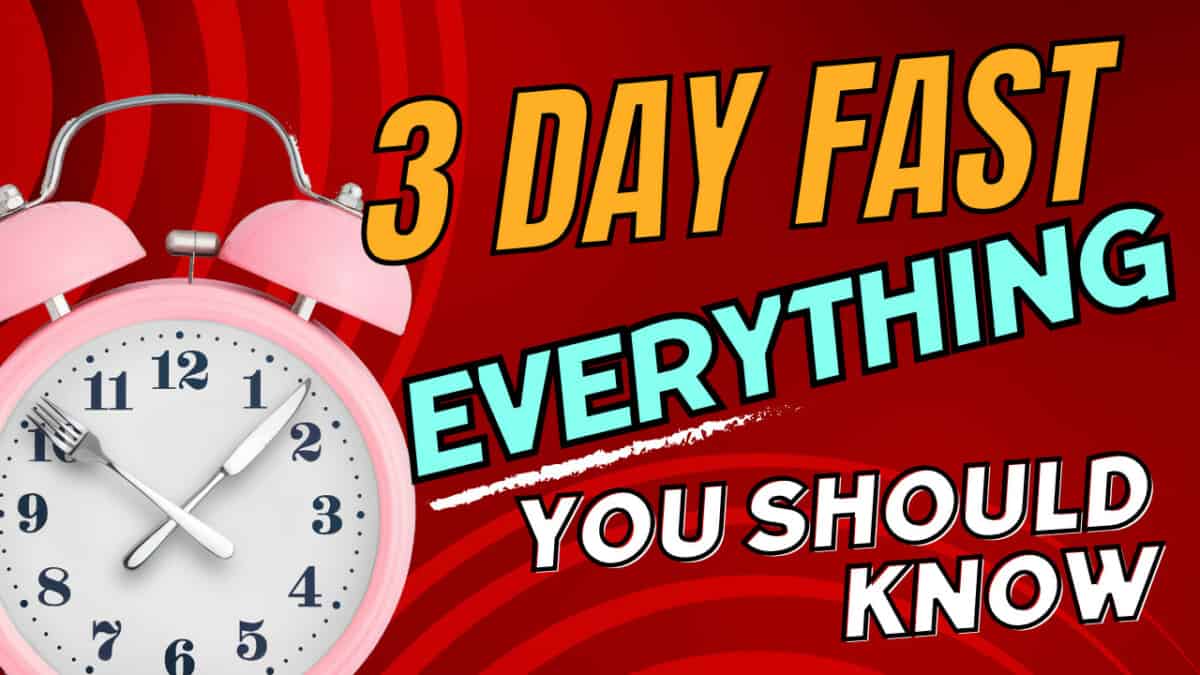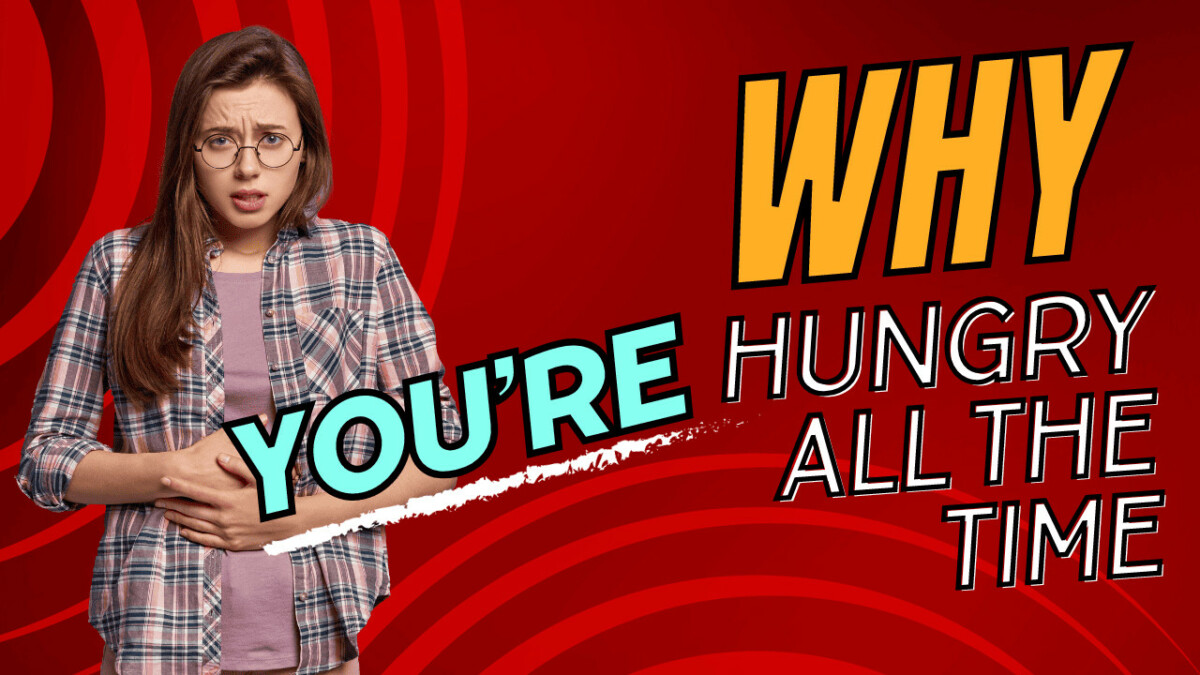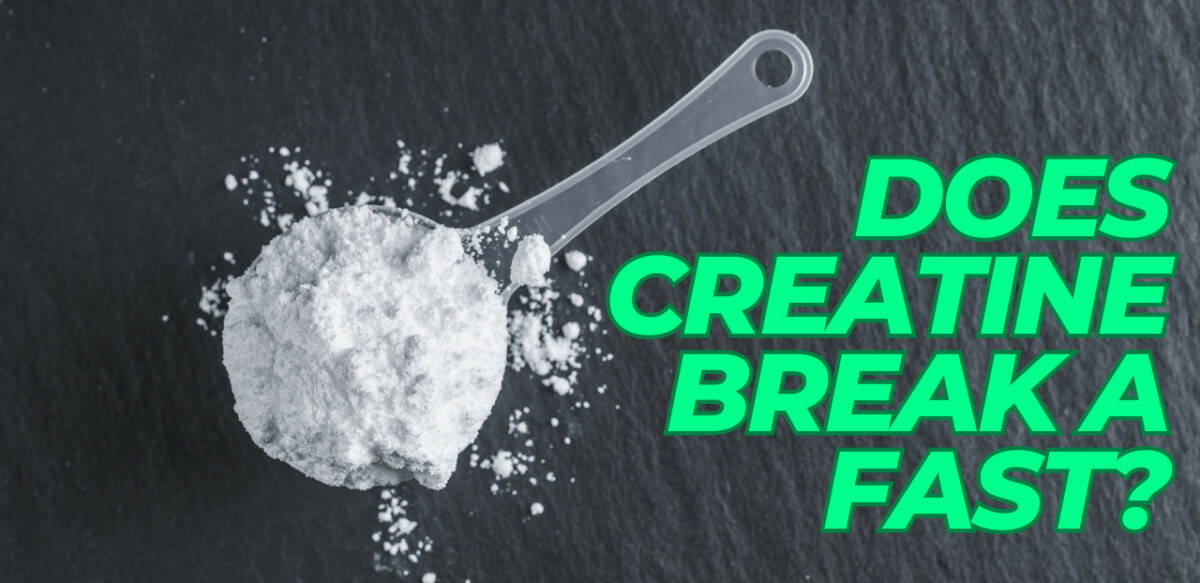Intermittent fasting is a weight loss dieting method that has surged in popularity in recent years because of its simplicity yet effectiveness.
By restricting the times you eat, you’ll have an easier time cutting down on calories and snacking. Fasting has many other health benefits, including improved energy levels, mental clarity, and metabolic health.
But if you’re new to fasting, you’ll need to know exactly how to do it and the best fasting schedules for your results. You’ll also need to know what you can have during your fasting window to avoid breaking your fast.
There are things to know and mistakes to be aware of in case you find yourself not losing weight with intermittent fasting. Intermittent fasting can seem a little scary at first, especially if you’re used to eating throughout the day.
Fasting is safe for most, but you should also be aware of the pros and cons. Let’s dive into intermittent fasting so that if you decide it’s for you, then you can get the most out of it following this beginner’s guide.
Why Intermittent Fasting Works Weight Loss
So what is intermittent fasting?
Intermittent fasting uses the power of time-restricted eating to turbocharge your metabolism and ignite fat loss. By cycling between periods of fasting and feeding, it revitalizes body systems of optimal health and longevity.
Your body burns through a few different fuel sources, and intermittent fasting is an effective way to force your body to burn fat for fuel. I like to think of it as how you and I spend money. The order your body burns energy is comparable to having a savings account, checking account, and cash on hand.
First, you’ll spend the cash, then the checking money, and finally the savings. Think of your body fat as your rainy day savings account. Your body wants to save this weight for a rainy day. Your caveman ancestors could survive longer without food if they had body fat preserves.
The sugars and carbohydrates you’ve recently eaten are like cash on hand. Your body uses those up first for fuel.1 But if you’ve had too many and didn’t burn them off, your body will likely store them as body fat (usually into stubborn areas like the belly).2
Glycogen (stored glucose in your muscle and liver) is usually used next after the incoming sugars and carbs are gone, just like your checking account. Glycogen is a fuel source that is easier for your body to utilize after sugars and carbs are depleted.3
So you have to first go through recently eaten sugars and carbs, then your glycogen stores, and then finally your body will start using fat stores for fuel.
Eating sugars and carbs also elevates the hormone insulin in your body. Insulin tells your body not to burn fat and to instead store these just eaten carbs and sugars as fat for later use.4
If you’re constantly eating during the day, your body will have a harder time reaching your fat stores. Frequently eating lots of carbs and sugars is like “making it rain” cash.
By restricting your eating window with fasting, you’ll burn up those sugars and carbs, then the glycogen, and you’ll start burning through fat stores. You’ll also keep your insulin lower, making it easier for your body to burn fat for fuel.
Key Takeaways:
- Your body has to use up recently eaten carbs & sugars, then glycogen before being able to really burn fat stores.
- Fasting gives time for your body to burn through recently eaten foods, glycogen, and finally starts burning your fat stores.
- Your body stubbornly holds onto fat stores for a “rainy day” in case of survival needs. So need to reach into the “piggy bank” savings account to really start burning body fat.
Health Benefits From Intermittent Fasting
The health benefits of intermittent fasting go beyond weight loss. Sure, fasting can help you lose weight, but it can also provide many other benefits.
Reduced Calorie Intake
The simple calorie restriction is the biggest benefit of intermittent fasting for weight loss. Yes, calories do play a major role in weight loss, and it’ll be near impossible to lose weight if your body is in a constant state of calorie surplus.
Just by restricting your eating window, you can cut down on 550 daily calories.5 You’ll probably skip breakfast and won’t be snacking after dinner. This alone is a huge reason why intermittent fasting is effective for losing weight.
Reduced Hunger
Over time, fasting naturally decreases hunger levels.6 You’ll become better in tune with hunger queues and know the difference between real hunger, thirst, boredom, and emotions.
Your body’s hunger hormones improve without dealing with constant blood sugar and insulin spikes.
Getting “hangry” after skipping a single meal most likely means your body is a “sugar burner.” This is when your body is relying on incoming sugars and carbs for fuel. This is a sign of hormone dysregulation that can gradually be improved with intermittent fasting, and turn you into a “fat burner.”
Improved Gut Health
You’ll notice more energy right off the bat since your body isn’t working around the clock digesting and processing your food. Instead, it is burning through fuel at a steady pace, providing clean energy. Your mind will be clearer, and your mood will most likely improve for the same reasons.
Fasting gives your gut and digestive system a break from the constant incoming food.
This provides your gut with precious time to rejuvenate your digestive system. Intermittent fasting can also improve your gut health by enhancing the gut microbiome, strengthening the gut barrier, and reducing inflammation.
Studies have found fasting improves the healthy balance of the gut microbiome.7 Beneficial bacteria can grow during your fasting periods. Inflammation in your gut will be reduced, improving your gut barrier and digestive efficiency.8
Stronger Healthy Aging
Intermittent fasting can enhance autophagy, your body’s natural cleaning system for old, damaged cells that accelerate aging.9 The more autophagy your body has from intermittent fasting, the longer and healthier you will live.
Fasting improves your metabolic health by reducing insulin resistance and blood sugar levels.9 This leads to reductions in blood pressure, improved lipid profiles, and reduction of bad cholesterol and triglycerides.10,11,12
The reduction of severe health diseases can also be improved by intermittent fasting. Obesity, type 2 diabetes, heart disease, neurodegenerative diseases like Alzheimer’s, cancer, and inflammatory diseases like arthritis can be improved with fasting.13,14,15
Enhanced Mitochondria
The mitochondria are the powerhouses of your body’s cells, and as my high school biology teacher called them, “mighty mitochondria.” A sedentary life makes your muscles less active, which, over time, leads to mitochondrial dysfunction.16
Mitochondria are responsible for converting the nutrients in food into energy. Due to mitochondrial dysfunction, you’ll burn fewer calories and have a slower metabolism.17
Efficient mitochondria also help to burn body fat for fuel (lipolysis). With mitochondrial dysfunction, your body will burn less fat and instead store more, especially in the belly area.18 Mitochondrial dysfunction also leads to insulin resistance and inflammation, both of which can contribute to inflammation.19
Intermittent fasting can enhance mitochondrial biogenesis, which creates new mitochondria in your cells.20 This will improve your cell’s ability to produce energy more efficiently, giving you more energy and increasing the number of calories your body burns.
How Much Weight Can You Lose With Intermittent Fasting
Your body will start losing weight with the daily calorie restriction and improved metabolic flexibility. Metabolic flexibility is your body’s ability to efficiently switch from using carbs or body fat for fuel.21
Poor metabolic flexibility will cause your body to struggle with fuel, switching between carbs and body fat. Your body will have a harder time losing weight with poor metabolic flexibility since it’ll be “stuck” relying on incoming sugars and carbs for fuel.
If you notice you become “hangry” without eating for a while or even lightheaded when you start fasting, then it could be a sign of poor metabolic flexibility.
With intermittent fasting, you can start seeing weight loss results in a matter of days, if not the first week. Simply lowering your calorie intake, reducing feeding frequency, and stopping snacking can help you lose 3-10 pounds in the first week.
Keep in mind that some of the weight you initially lose will be water weight. Your body will become glycogen-depleted as you cut back on sugars and carbs. Glycogen (stored carbs) holds 3g of water for every 1g. So you’ll flush out water weight in the beginning.22
How much weight you’ll lose in the first month will depend on how much weight you have to lose in the first place. Those with more weight to lose will have an easier time losing more. Those who are only trying to lose the last 10 or 20 pounds will have slower results.
Typical weight loss with intermittent fasting in the first month is around 10-20 pounds. However, individual weight loss can depend on your metabolism, diet, muscle loss/gain, and water retention.
Key Takeaways:
- Many lose 3-10 pounds in their first week of fasting. And in the first month, 10-20 pounds is possible depending on the amount of excess weight one has.
- Initial weight loss could be contributing to water weight.
- Improved metabolic flexibility from fasting makes it easier for your body to burn fat stores for fuel.
Best Fasting Schedule for Weight Loss
Many intermittent fasting beginners make the mistake of thinking that weight loss starts right after they finish their last meal. The truth is it takes your body many hours before it can burn through the sugars and carbs you’ve recently eaten.
Glycogen is also prioritized as a fuel source, usually before your fat stores. The longer time-restricted eating window you have, the more weight you’ll lose. Eat a low-carb meal for your last meal prior to starting your fast. This allows your body to to enter a ketogenic state faster, resulting in more weight loss.
It takes about 3-5 hours to digest your last meal before your body is officially in a “fasted state.” Most people eat dinner for the last meal, so they sleep during this time. Then, only at about the 12-13th hour does your body really start using fat stores for fuel.
Women may want to change their intermittent fasting based on their cycle. In the first ten days of their cycle (after the period starts), women can thrive on intermittent fasting since it keeps insulin low, which promotes estrogen production. Any length of fasting period can be done.
Longer fasts should be avoided between days 10 and 15 of a woman’s cycle. Progesterone production doesn’t work well with cortisol, so stressing from longer fasts (especially multi-day) isn’t advisable. Limit your fasting length to 15 hours during this cycle period.
Day 15-19 is a better time frame in the cycle to do longer fasts. But on day 20, it’s not advised to fast at all up to 10 days before a woman’s next period. This is when progesterone production is key, and stress from fasting could diminish its production.
Menopausal women can benefit from intermittent fasting since hormonal changes make them more insulin-resistant. While men can get quicker results with shorter fasting periods, women do better with longer fasting periods (16+ hours).
Stages of Fasting by Hour:
Now let’s get into the best daily fasting schedules:
12 Hour Fast:
A 12-hour fast is the bare minimum for fasting periods. At about 8-12 hours, your body starts to use fat stores for energy. So, by limiting your time-restricted eating window to only 12 hours, you’ll only be getting a fraction of the results. I recommend at least trying to go 13 hours.
But 12 hours is a good starting schedule for beginners. If you’re used to eating around the clock, then it’ll take some time for your body to adjust. Starting off on the shorter side of fasting periods will make this adjustment easier.
Start with 12 hours, then work your way up to 13, 14, 15, 16, etc. Take it hour-by-hour and increase a week at a time. This can help your body improve its metabolic flexibility, stop snacking, and stop relying on incoming sugars and carbs for fuel.
16/8 fasting:
The 16/8 method uses a 16-hour fasting window followed by an 8-hour feeding window daily. This schedule is doable by most since you’re sleeping through a big bulk of the fasting window. And you’ll only really have to skip breakfast and brunch while getting to have lunch.
You’ll be practicing continuous calorie restriction by skipping breakfast and any mid-morning snack or brunch. You’ll also burn fat stores for energy, resulting in further weight loss. This is why it’s better to fast for 16 hours than just 12 hours.
The 16/8 schedule is known as the “magic number” for fasting. They call it the “magic number” because 16 hours of fasting strikes a balance between getting good results and keeping it sustainable for the long run.
18/6 fasting:
The 18/6 method is a level-up from the 16/8 method. It uses an 18-hour fasting window followed by a shorter 6-hour feeding window. This schedule works best for those who also prefer to eat only two meals a day: lunch and dinner. A popular eating schedule for 18/6 is to have lunch at 12 p.m. and dinner at 6 p.m.
Extending your intermittent fasting window to 18 hours will enhance fat loss. This is also when your body really starts ramping up autophagy. So, if you’re looking for more anti-aging and longevity benefits from fasting, then this 18/6 schedule will be a great choice.
Going longer with an 18-hour fast will also put you into a deeper state of ketosis. You’ll burn more fat for fuel, especially towards the end of your fasting period. But going 18 hours of fasting can be much harder, and it’s a length you should work up towards.
20/4 fasting:
The 20/4 fasting schedule is also more popularly known as the “Warrior Diet.” You’re essentially fasting for 20 hours a day and having only a 4-hour feeding window. The 20/4 fasting schedule is much more difficult than the 16/8 or the 18/6 and requires more commitment.
It can be hard to socialize around meals and events if you’re confined to only four hours of available eating time per day. You also have to make sure you’re eating enough of the required nutrients so your body doesn’t become deficient.
But if you’re willing to commit to this more rigorous fasting schedule then you’ll have higher levels of weight loss, fat burning, improved insulin sensitivity, increased autophagy, deeper ketosis, and improved mental clarity. It’s also much simpler only having to plan one or two light meals per day.
What about longer fasts?
In my experience doing multi-day or even 24 hour fasts isn’t advised for beginners. I’d recommend first starting with a lower end of fasting schedules and working your way up.
From there when you become more used to fasting you can start adding in longer mutli-day fasts. Alternate day fasting, 3 day water fast, and even a long 7 day water fast. I like doing a 3 day water fast once a quarter for a “spring cleaning.”
How to Fast Safely and Correctly
The hardest part of intermittent fasting is adjusting to it. If you’re used to regular eating, then a fasting beginner will need time for your body to adjust to a reduced eating window.
This transition period can result in feeling lightheaded, dizzy, and nauseous. This is because your body isn’t getting the influx of regular sugars and carbs to fuel off of. So your blood sugar crashes too low, resulting in lightheadedness and dizziness.
I always recommend starting off on the lower end of fasting windows and then progressively working your way up. Start with only a 12-13-hour fasting period before increasing it by an hour every 1-2 weeks.
While some hunger discomfort is expected, you probably shouldn’t push yourself to the point of starving. When your hunger levels get so bad that you’re ravenously hungry, it can cause you to binge eat. This is when many throw fasting out the window for good.
Try your best to reach your desired fasting window, but if you are getting super hungry, it’s best to end your fast there and have a low-carb, sugar-free, light meal. I usually recommend eating a couple of eggs. This way at least you’ll stay in a more ketogenic state.
Drink water to stay well hydrated during your fasting window. Electrolytes can be consumed without fear of breaking your fast as long as they don’t contain sugar. If your body is dehydrated, you can become more lightheaded and dizzy.
Also, if you find yourself getting too hungry it’ll be tempting to want to stop fasting altogether. But by working your way up progressively, you’ll be able to give yourself time to adapt and adjust to the new eating schedule.
What Foods to Eat (And Avoid) When Fasting
The biggest mistake I’ve seen with beginners and intermittent fasting is what’s eaten during the feeding window. An unfortunate fasting mistake is thinking you can eat anything you want during your feeding window.
Most women lose weight with a daily calorie restriction of 1200-1600 calories. And most men 1600-1800 calories per day. This will depend on the individual, so you may need to find the sweet spot for you. Fasting makes it easier to restrict calories since you’ll be cutting out meals and snacking.
The truth is you still have to eat well during your feeding window to really get results. Binge eating during your feeding window will prevent you from losing weight. While fasting does cut out calories and snacking provides some leeway, it doesn’t open the floodgates either.
Intermittent fasting works best with a low-carb diet. Fasting puts your body into a state of ketosis, allowing it to burn fat more efficiently for fuel. You can make it harder to get into this ketosis state if you’re having too many sugars or carbs.
It’s ideal to eat a low-carb, sugar-free meal for dinner before starting your fast. This makes it easier and quicker for your body to burn through any carbs or sugars. This results in faster results since your body can quickly enter a ketosis fat-burning state.
I recommend eating only two meals during your feeding window. If you’re a beginner, it may take time to get used to this. So start with 2-4 light meals, then work your way down to two.
Cutting out snacking during your feeding window will help you get faster results. The bright side of only having two meals a day is that you can eat bigger meals for them.
It’s ideal to eat anti-inflammatory foods that are lower on the glycemic index. Stay away from foods that cause inflammation and insulin spikes:
- processed foods
- refined carbohydrates
- seed oils
- excess alcohol
- sugary beverages
- trans fats
- fried foods
Eat more real, whole foods. Come up with some simple meals that you can meal prep ahead of time. That way, you always have a healthy meal ready to go. If you don’t have healthy meals available, it becomes too tempting to pick up fast food when you get hungry.
Some real whole foods that are approved:
- meats
- fish
- eggs
- vegetables
- low-glycemic fruits
- nuts & seeds
- healthy fats & oils
Based on the individual, you may want to avoid certain foods that can cause digestion upset and inflammation. Foods like grains, dairy, legumes, eggs, soy, artificial sweeteners, certain vegetables and other food additives.28
Making Your Fasting More Effective
I’ve learned a few “tricks of the trade” to speed up your fasting results. As earlier said, fasting can also be challenging, but there are some methods to curb hunger while speeding up the results.
The first tip is to make sure you’re getting enough sleep. If you’re sleep-deprived, then it’ll be much harder to stick with your fasting schedule the next day. Studies have found that a lack of sleep can increase hunger and cravings for junk food.23,24
If you find yourself too hungry before bed, try eating your last meal later. Most people have dinner for their last meal before their fast, but having it too early (6 p.m.) can make you feel too hungry before bed. Too much hunger before bed can make it harder to get a deep, restful sleep.25
Exercising or working out during your fasting window can enhance weight loss and fat burning. Since your body will be in a state of ketosis and higher fat burning, it’s also the ideal time to exercise. You’ll burn up more fat for fuel with fasted exercise.
Ideally, you’ll work out towards the end of your fasting window. This is when your body is in its highest state of fat burning. Make sure you work your way up to it since your body can become more lightheaded in this fasted state. But even taking the dog for a walk will boost your results.
Having the right drinks while fasting can also curb hunger and give you better results. Basically, anything that is zero-calorie is approved to have during your fasting window without breaking your fast. But there is some gray area, too.
Here is what you can drink while fasting:
- water
- lemon water
- coffee
- tea
- sparkling water
- apple cider vinegar
- psyllium husk fiber
Then in the gray area are zero or very low calorie energy drinks. Some fasting purists believe the artificial sweeteners in energy drinks are so sweet they can cause an insulin release in the body.26 But if having a sugar-free energy drink helps you get through your fast then go for it.
Lastly, add in C8-MCTs into your fasting window for accelerated results. C8-MCTs are converted into your ketones by your liver.27 These ketones are what your body makes from fat stores for fuel.
It can take many hours before your body really starts ramping up ketone production. So by having C8-MCTs, you can help kickstart the “metabolic switch” to start burning up fat stores for energy.
I use a C8-MCT keto coffee creamer mixed with black coffee to make the ideal fat-burning combination.
Support Many of the Keto Benefits Associated With Increased Ketones, & Support Them FAST, but Without the Difficulty of Doing Keto...
Increase Ketone Levels Inside Your Body to Boost Metabolism, Elevate Energy & Enhance Mental Focus
- 3X Better Than Coconut Oil, Butter or MCTs
- Heightened energy levels
- Reduced cravings & appetite
- Graceful aging
- Healthy metabolism
- Increased mental clarity & focus
- Heightened physical performance and recovery
Why You’re Not Losing Weight With Intermittent Fasting
If you’ve already started intermittent fasting and haven’t seen any weight loss then there are a few reasons why…
The first is you could be burning fat and gaining muscle. This is especially true if you’re resistance training along with intermittent fasting. The body weight you’ve lost in fat can then be replaced by muscle weight.
Fat takes up about 15% more volume space than muscle. So even though the scale might not show much change in body weight, you’ll be losing inches and improving body composition.
This is why it’s a good idea to track your body fat percentage, circumference measurements, and weight. This will give you a much better overall progress tracking than just your weight.
Your water weight can fluctuate on the scale by 3-5 pounds in just one day. Women can have water retention up to 10 days before menstruation.28 The scale can be deceiving.
What foods you’re eating are another big reason why you might not have lost weight. I’ve noticed many overeat and eat the wrong foods during their feeding window. It’s tempting to “reward” yourself after making it through your fast by indulging.
Start tracking the foods you eat to get a measurable and accurate picture of your daily calorie intake. Most people drastically underestimate their daily calorie intake.29 You can use a calorie tracking app, a spreadsheet like Excel, or even a written journal.
Your fasting window is not long enough. If you’ve only been fasting for 12 hours or so then this may not be enough to really get results. Start increasing your fasting window and try to build up to 16 hours of fasting per day.
Take a look at your macronutrient intake. If you’ve been eating too little protein, you could be losing too much muscle while holding onto more fat. A good rule of thumb is to have around 0.6 to 0.8g of protein per pound of body weight.
If you’ve been eating too many carbs and sugars, then this will also hold you back from losing weight. Your body will break ketosis and start using up these incoming sugars and carbs again. It’s like hitting the restart button with your fasting and ending up not going anywhere.
Key Takeaways:
- You could be burning fat and losing muscle. Water retention also can throw off the scale.
- Be sure to track your body fat percentage & circumference measurements in addition to body fat for more accurate progress.
- The foods and amount you’re eating during your feeding window could undo the work of your fasting.
Pros and Cons Of Intermittent Fasting
Simplicity of time-restricted eating. Many love the simplicity of intermittent fasting since you really just have to focus on not eating during your fasting window. And then not go overboard during your eating window. You’ll cut out mindless snacking.
Improved metabolic flexibility. Your body will adapt much better to not eating for a long period of time. You’ll no longer be a “sugar burner” relying on incoming carbs and sugars for fuel. Instead you’ll become a “fat burner” and better utilize fat stores for energy.
This significantly helps keep your energy levels high and keep you from getting “hangry” cranky if you don’t eat every few hours. Then, your body will have an easier time burning fat for fuel.
Improved hormonal balance. Intermittent fasting improves many hormones that play key roles in your metabolism, growth, and overall health.
- Reduced insulin levels & improved insulin sensitivity30
- Increased HGH (human growth hormone)31
- Higher norepinephrine (sends signal to fat cells causing them to break down for energy)32
- Higher leptin (satiety hormone makes you feel fuller)33
- Lower ghrelin (hunger hormone that makes you hungry)34
Women with PCOS (Polycystic Ovary Syndrome) have been found to benefit from intermittent fasting. PCOS commonly causes insulin resistance problems, so by following an intermittent fasting plan, they can improve their hormonal balance and reduce inflammation.35
You don’t have to do it every day. The great part of intermittent fasting is that you don’t have to do it all the time. You can take a day or two off here and there without fear of everything going out the window. This makes time-restricted eating much more sustainable in the long run.
Fasting isn’t for everyone. Before starting a time-restricted eating diet, you should first talk to your doctor. Fasting isn’t ideal for those with a prior history of eating disorders. If you have a history of eating disorders, then it’s advised to work with a licensed practitioner so they can help make fasting work right for you.
Pregnant women should also avoid intermittent fasting since they need to provide nutrients to the developing fetus. If you’re nursing, make sure you’re fasting for less than 17 hours since it’ll stimulate autophagy. Autophagy is a detox method, and toxins could make their way out of a nursing woman’s body and into the baby.
Children and young athletes also aren’t advised to do intermittent fasting since they require more incoming nutrients for growth and development.
It can be hard for beginners. If you’re used to eating all the time, switching to time-restricted feeding can be challenging. This is why it’s a good idea to follow an intermittent fasting plan that gradually progresses the fasting window.
You still have to eat well during your feeding window. Don’t treat eating as a reward or comfort. But the longer you keep up with fasting, the easier it becomes, and you can go longer without getting hungry.
Nutrient deficiencies. You have to make sure you’re getting enough required nutrients during your feeding window. With a reduced feeding window and if you’re only eating one or two meals you could find yourself not getting enough vitamins and minerals.
If you’re not eating enough vitamin and mineral-rich fruits and vegetables, try adding a smoothie to your intermittent fasting plan. You can get a lot of nutrients in one fell swoop. You can also add a super greens powder to get many of these nutrients and then some in a quick and easy drink.
It’s no magic pill. Like anything, fasting isn’t a magic pill, and it requires effort and consistency. Adjusting can be difficult at first, but you’ll be rewarded with not only weight loss but also improved hormonal balance, lower inflammation, better brain clarity and mood, and more health benefits.
Josh holds a Bachelor’s degree in Exercise Physiology and Nutrition Science. He’s a Certified Strength and Conditioning Specialist (CSCS) by the National Strength and Conditioning Association and he’s a Certified Personal Trainer (CPT) by American Council on Exercise. He’s worked as a Strength and Conditioning Coach at the high school and college levels. He has over 15 years of experience as a personal trainer and nutrition coach. He strives to bring inspiration and results for people to live healthier lives through smart diet and exercise.










